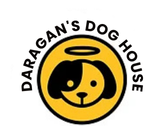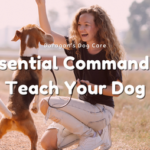Winters in New England are special. There’s so many great winter activities, but there are also many challenges we face every year, especially as dog owners. We need to make sure our four-legged family members are warm and comfortable in the freezing temperatures.
So to help out as many people and dogs as we can, here are some of our favorite tips for surviving and thriving during the winter months.
Table of Contents
Disclosure: This post contains affiliate links, which means we may get a commission of any products purchased through these links, at no cost to you.
Keeping Warm!
Keeping warm is the first thing to worry about. Some dogs are specifically bred to live in the worst winter conditions, such as huskies, Samoyeds, malamutes, and similar breeds. In fact, if you were really determined, you could turn a Samoyed’s fur into yarn to knit your own cozy socks! If not, cuddling your fluffy dog will also work just as well.
If you don’t own a dog specifically bred for the winter, more attention needs to be given to their warmth and comfort. Short-haired dogs have a higher risk of frostbite and hypothermia, but the risk is still present for most dogs.
Don’t Spend Too Long Outside
Bundle Up
We highly recommend investing in appropriate winter gear for your pup. That means a winter coat, a sweater, and maybe even a hat. If you’re looking for recommendations, here are a few examples below! Breeds like labs, poodles, greyhounds, and even fluffier ones like corgis, are not bred to survive the intense winter conditions that we experience in New England. Their fur coats are comparable to a light hoodie, perfect for the fall and spring. But more layers are needed for the colder months.
Consider these products:
Essential Paw Protection
Paw protection is especially important when there is ice and salt on the ground, which can damage paw pads. Be sure to clean your dog’s feet after every trip outside. Your dog may become ill if he licks salt off their paws. If your dog has fuzzy feet, consider trimming the fur. Ice balls can form between the pads and toes.
Dog boots and paw ointment are also great solutions for paw protection in the winter. It’s no different than a person wearing gloves and applying lotion. You will likely need to train your dog to wear boots before they become a regular part of your winter routine. This is a process that may take some dogs longer than others, especially if they are not fans of having their paws touched.
To train your dog to wear boots, you may need to first desensitize their paws and then slowly introduce the boots. If they are ok with that, then let your dog sniff the boots and place them next to the food bowl at meal time to create positive associations. Reward your dog with a treat for positive interactions before the boots go on their feet. Then put on one boot and reward them with a treat if they walk around. Then take it off. Repeat this process a few times, slowly adding another boot until all four are on. Remember to be patient and don’t rush the process.
Consider these products:
Spoil Your Dog with a Warm Blanket or Heated Bed
There’s nothing more comfortable than a warm bed on a cold winter night. So give your dog the same experience, especially if they sleep in their own personal space at night (and not in your bed). Piling extra blankets, particularly those with additional insulation, such as Sherpa blankets, is an excellent solution. You could also give your pup a heated dog bed or a heating pad that can go under a bed or blanket. If your dog tends to eat beds and blankets, a potential alternative is a thick crate cover to help keep them toasty. We don’t want them chewing on any wires.
Consider these products:
Safety First
Winter safety is not just about keeping warm. There are other safety concerns to be mindful of during the season.
Avoid Ice on the Ground
Despite having four legs, dogs are just as susceptible to injuring themselves on slippery surfaces. Dogs can become stressed out and afraid of surfaces where they don’t have any traction. If they do start slipping and sliding, they may suffer from muscle strains and similar injuries as they try to regain their balance. Also, don’t let your dog run off leash across hard surfaces outside, even if they’ve been cleared of snow. There may be patches of thin ice that can also lead to injury. And never, ever let your dog wander into frozen bodies of water. The ice can easily crack and you or your dog can fall into the water.
Properly Store Antifreeze and Other Chemicals
Antifreeze tastes sweet, which makes it dangerous. This sweetness can attract your dog’s curiosity and encourage them to lick it up. But just a small teaspoon is enough to lead to kidney failure. Symptoms of antifreeze ingestion can include:
Vomiting
Seizures
Excessive thirst
Panting
Lethargy
Drunken behavior (stumbling, loss of balance)
Make sure antifreeze and other chemicals are properly stored away, and watch out for any leaks or spills. In addition, do not let your dog lick up any puddles in the street. There may be chemical residue and runoff due to spills from other people or leaks from a car. Be sure to have an emergency plan in place if the worst were to happen. Always know where your nearest emergency veterinarian is and have their number on hand.
Winter Health, Wellness, and Grooming
Even if your dog does not spend a lot of time outside and gets dirty, it is still important to maintain proper hygiene and health regimens. Cold air can dry out a dog’s skin, eyes, and throat. To help avoid some of this, bathe your pets less often. Dogs have natural protective oils that can reduce their chance of developing dry, flaky skin. If you do need to bathe your dog, you may want to use a dog-friendly moisturizing shampoo to help keep their skin moisturized and itch-free.
It is also important to make sure that your dog’s ears are clean and dry after playing in the snow or using the bathroom during a storm. Extra moisture can lead to ear infections, especially in hounds and other long eared dogs.
DIY Puzzles and Scavenger Hunts
Consider these products:






